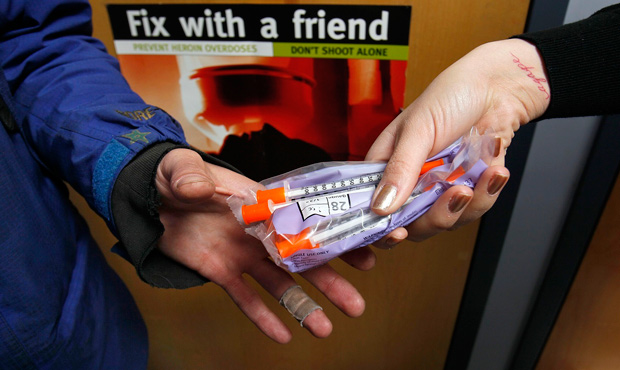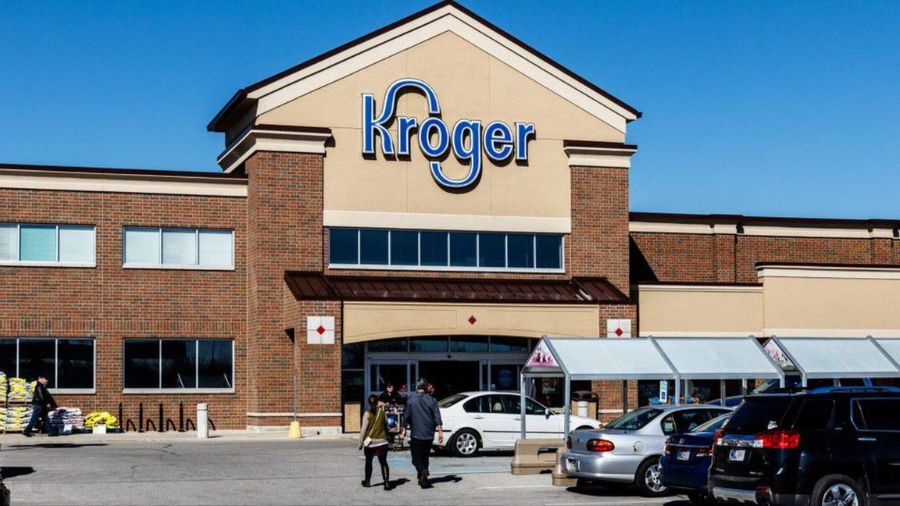Two safe injection sites proposed for the Seattle area
Oct 3, 2016, 4:24 PM

(AP)
(AP)
The Seattle City Council was briefed Monday on a proposal for safe injection sites aimed at drug users in the region. The proposal is an attempt to mitigate the negative public effects of addiction in the area.
“A major recommendation was that we create, essentially, a location where people can use drugs they obtain, bring them into the facility, they can get clean supplies to use those drugs, and be monitored during that consumption — generally by an RN or a health care provider,” Dr. Caleb Banta-Green from the University of Washington told the council.
His argument is that the sites will cut down on public drug use, and therefore remove many of the negative effects on society such as dirty needles on the ground, overdoses and public use.
Can this drug help solve the opiate crisis?
The proposal is the product of the Heroin Crisis Task Force, which was formed by Seattle Mayor Ed Murray and King County Executive Dow Constantine. The task force is promoting one safe injection site in Seattle and one outside the city limits. On Monday, they made their case for why such safe injection sites are needed. According to Dr. Banta-Green, there were about seven million syringes traded in at King County needle exchanges last year – that equates to 19,000 each day.
“What we’ve seen so far, the evidence is that they will use less in public,” Dr. Banta-Green said. “There will be less public consumption. There will be less infection disease transmissions. And the evidence is pretty good that there will be less overdose deaths.”
Safe injection sites and the opiate crisis
Banta-Green notes that a survey conducted last year indicates two-thirds of users who are not in treatment want help to reduce their drug use. Safe injection sites are viewed as a resource to address that.
The opiate crisis is one that the Seattle region, and the United States, has not experienced at this level before. The modern epidemic of opiate and heroin addiction is often blamed on the rise of prescription medications, which act as a gateway for demographics that previously weren’t as likely to use.
“Some portion of people are predisposed to like opiates,” Dr. Banta-Green said. “They are the people, when they take opiates, get energized and say things like, ‘I felt normal for the first time in my life.’ Most people get nauseated, sleepy and don’t like them.”
“We are still at a point where about one in five adults is prescribed an opiate each year, and one in 10 adolescents is prescribed an opiate each year,” he said. “Most of them don’t use them all, and most of them keep them … Most of those people historically never had access to opiates, because you had to use heroin. There was fairly modest opiate prescribing 15 or 20 years ago. As opiate prescribing took off, the potential for people who are predisposed to like them, all of a sudden had access.”
The idea of the safe injection sites, proponents argue, is to act as a resource center for an increasing population of opiate addicts and aim them at methods of getting off of the drug.
“If you talk to people who inject drugs, they don’t want to be using in front of other people, they don’t want to be using in public, they don’t want to be using in parks,” Dr. Banta-Green said. “So I think that’s really where this idea of a community health engagement location comes from.”
KIRO Radio’s Chris Shaw contributed to this article.













